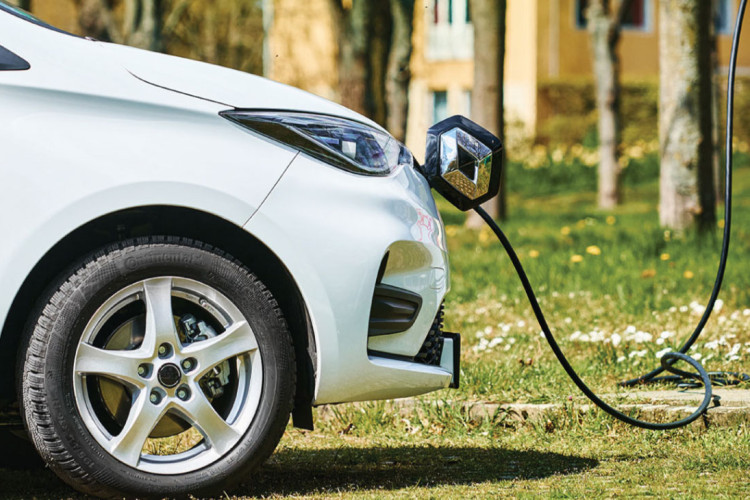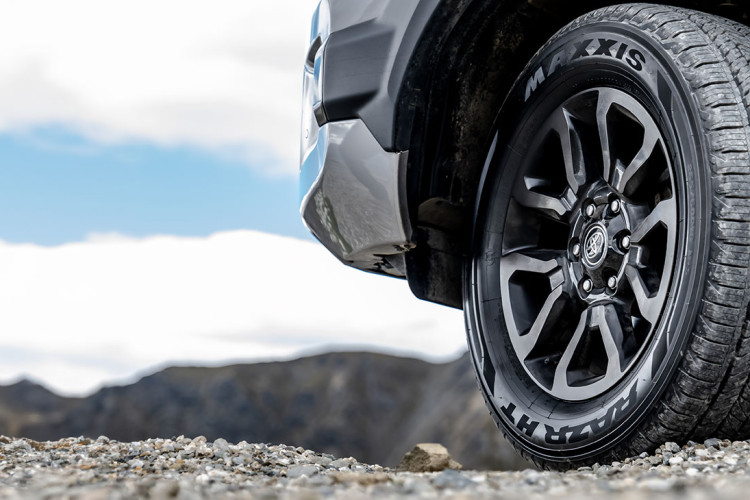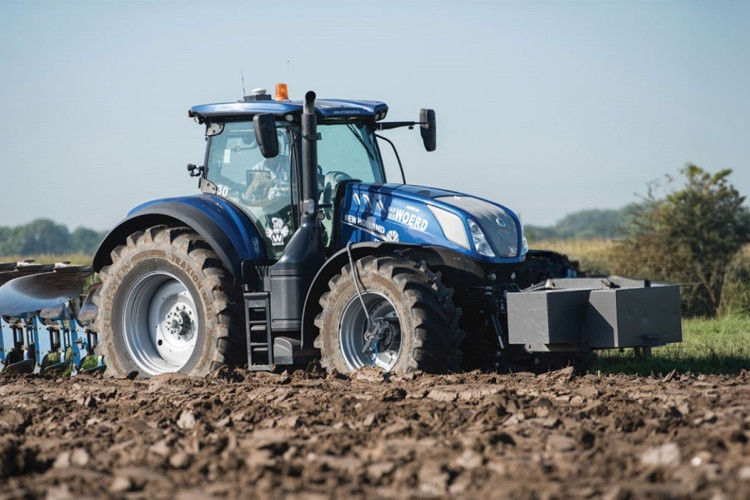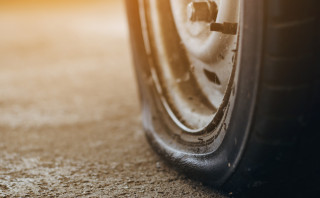Road SafetyWhat to do when you get a blowout
It could just be the most frightening experience you’ll have. There you are, merrily driving along the open highway without a care in the world. One moment your mind is occupied with thoughts about supersizing the fast food you're planning on treating yourself to. The next, you're struggling to think at all. Reactions take over and you move on instinct. Hopefully, the right instinct.
A tyre blowout is just plain scary, it doesn’t matter how good a driver you are. Having what sounds like a grenade suddenly explode under your vehicle is enough to shock you bolt upright. Then there’s the sudden change in the handling and…
We’ll pause here. Before we explain what happens and what to do, it’s good to know how likely it is to happen.
How Much of a Problem is it?
It’s hard to know. The US National Highway Traffic Safety Administration suggests some 75,000 accidents per year, resulting in 400 deaths can be attributed to a tyre blowout. That sounds like a huge number. But let’s put it in context of the annual 6 million road accidents that happen in the US every 12 months, leading to a mind-staggering death toll of 32,850. Taking these numbers... it means a tyre blowout is the cause of 1.25% of all accidents and almost the same percentage of deaths (1.21%). What does this tell us? It tells us tyre blowouts don’t happen that often... but the consequences can be fatal so we shouldn’t dismiss them.
What Causes a Blowout?
There’s a few suspects here and interestingly it’s a lot less likely to be about the tyre itself so much as what’s happened to it since it left the factory. First up, is our old adversary...
Underinflation
All tyres come with instructions for the correct air pressure. They aren’t there just for the sake of it either. Making tyres is a complicated process and the air pressure is set after numerous rounds of testing. Veer outside of the recommended settings and things start to go wrong. If you’re lucky, the tyre might just wear a little unevenly or quicker. Travel too far or too quickly and it might blow. This is caused by heat build-up. An underinflated tyre has more contact with the road, the sidewalls flexing much more than intended and this repeated flexing increases heat in the tyre. If you're wondering how flexing causes heat then we can try a little experiment. Take an old wire coat hanger and start to bend it back and forth. Keep doing this long enough and it’ll snap. If you were to touch the point where it snapped (warning: don’t) it would be hot. The same thing is happening with your tyre. It heats until it snaps or ‘blows’.
Overloading
Just because the adverts on TV show your 4x4 pulling a boat the size of the Interislander up the side of a mountain with a tray full of rocks and a possum in the passenger seat...it doesn’t mean it can actually do it. Sometimes advertising is misleading (it’s true). Where the adverts are completely factual pay attention to the tyres being used. Your 4x4 might not necessarily have the same tyre, with the same load rating. So when you try to move the house by placing it in the tray and then speed along the motorway… you are inviting danger. You can read more about load ratings here:
Damage
It’s not just potholes. Pretty much any sudden change in the surface which causes a shock to your tyre can do the same thing. When roadwork season is upon us, it's not uncommon to show a little frustration and attempt to accelerate away only to discover the return to the normal road surface has a pretty blunt lip before it. Hit that a little lip too quickly and the tyre internals get damaged. The damage might not be immediately noticeable. It might be a good few kilometres, or even a few days, before the inevitable happens and the tyre decides to give up. Sometimes signalled by a small explosive like sound. Or pop.
Bald Tyres
Stands to reason really. Reduce the amount of tread and you not only lose grip, there’s less rubber to protect the tyre falling foul from a sharp object. Depending on what you're unlucky enough to come into contact with varies what happens immediately after. If the guilty object is small, you might just get a slow puncture. Something a little larger and there’s the chance of that telltale pop.
Tread separation
The 'egg-shaped' tyre occurs when the tread has started to separate and the plies are pulling apart, perhaps due to air penetrating into the casing through fitting damage or sometimes road damage. These tyres have a distinctive ride which is often most noticeable at low speed, and will almost always blow out - if you are alert to the problem then you can guess what’s coming and change the tyre over before the inevitable happens.
Age Deterioration
Rubber becomes harder and less flexible as it gets older. This can lead to obvious perishing which is seldom enough to cause a blowout on its own (but might do on a 50-year-old trailer tyre). More often this means the bead rubber becomes brittle and if the tyre has to be removed and refitted (for example there is a puncture) then this can cause hidden fitting damage to the bead, and air can penetrate into the structure of the tyre through the cracks in the bead.
So what do you do?
Ok, so it happens. We know it happens. We know what can cause it. So what do you do?
Don’t hit the Brakes!
This will likely be your first instinct...but don’t do it. What you need to do is...
Stay Calm
It feels stupid to type this. As if you actually have any control over your reaction. But we must type it all the same because after the initial shock has gone, you’ll need to try and remain as calm as possible. Panic really is the enemy. If this article in popular mechanics is anything to go by, there’s a very good chance you’ll be ok by doing very little indeed.
Steer Straight
The steering wheel will provide enough feedback for you to cotton on quickly to the issue. Resist the urge to yank it and overcorrect if it pulls to one side though. Just aim straight ahead as much as you can.
Apply a little gas
This is probably the hardest bit to come to terms with. You’ll want to gently press down in the accelerator. Doing this will help you keep the vehicle straight and reduce any fishtailing or wobbling. You only need to do it for a second. It’s highly unlikely you’ll pick up any speed. Chances are you’ll still be slowing down as that blown tyre acts a bit like a parachute, the drag slowing the vehicle down.
Allow the vehicle to slow
Keep that steering wheel steady and let physics do it’s thing. Now would be a good time to breathe too.
At below 20kmh, gently brake and pull to the side.
Once the car is down to around 20 km/h, start to apply the brakes gently. You can now turn the steering wheel and start to move the car to a safe place to stop.
Once you’ve stopped, turn the ignition off and rest your head back against the seat. Breathe deeply and give yourself a little virtual pat on the back. You did good.
Reducing the chances of a blowout
It’s possible to take a number of steps to actively reduce the chances of getting a blowout. None of it will come as much of a surprise to regular readers of our blog.
- Make sure tyre maintenance is a regular part of your vehicle care routine. Look for any cracks, bulges or uneven wear. If there is… consult your local tyre specialist.
- Check the tyre pressure on a regular basis.
- Keep an eye on the tread. Don’t let it get too low.
- Don’t overload the tyre.
So, it’s pretty much the same checks as for other tyre issues. You’re basically trying to keep your tyres in good health and getting them checked when needed. Nothing too complicated there. Sure, it takes a little time. But so does changing a tyre or waiting for the AA to rescue you from the side of a motorway.
Stay safe folks.

Reduce your chances of a blowout.
-
Topics:
- Road Safety
More tips and articles

Tyres for Electric Vehicles

Product Spotlight:
Maxxis HT780 RAZR HT

